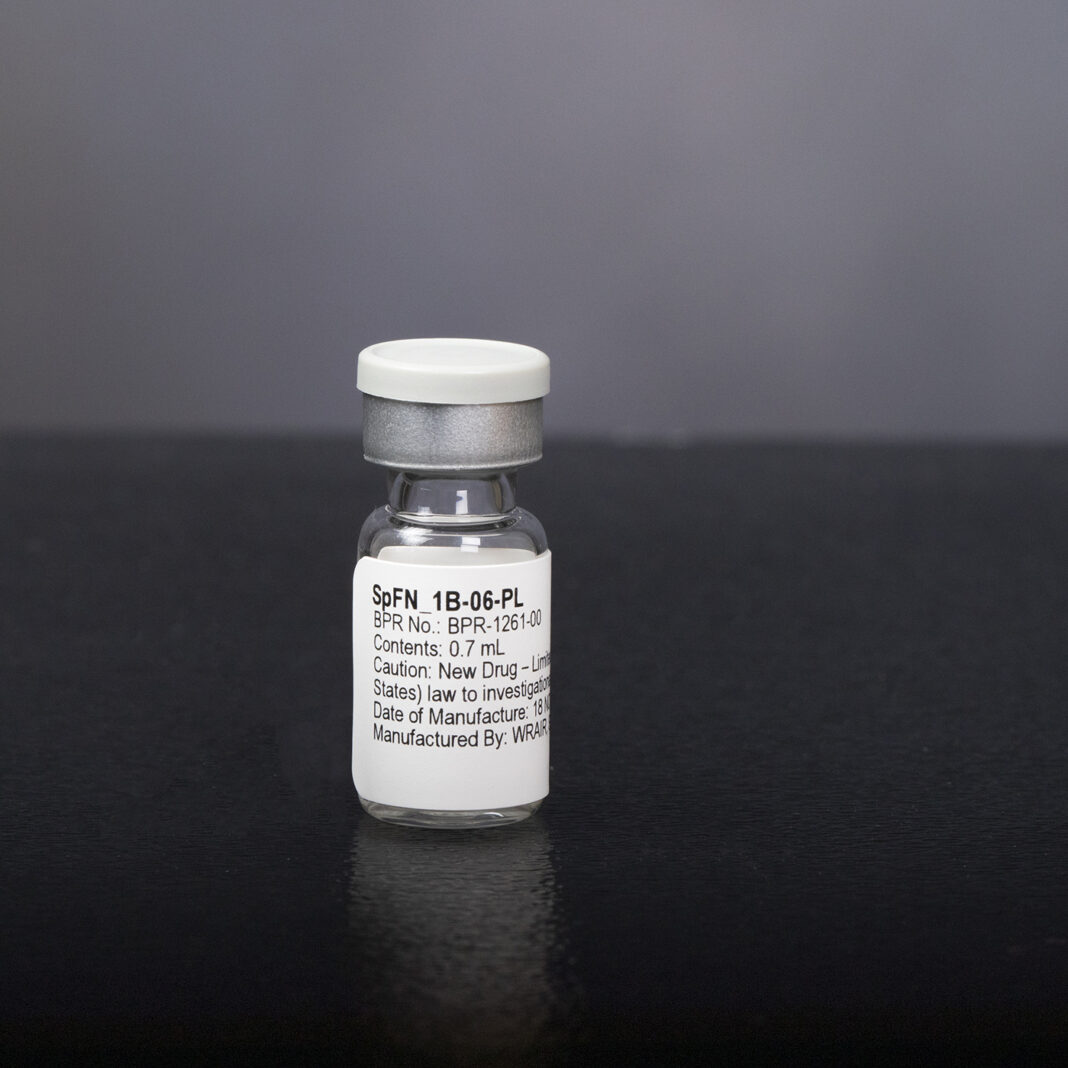As the world is embracing to fight against the new Covid-19 variant, Omicron, the researchers at the Walter Reed Army Institute of Research (WRAIR) of the US Army have developed a new vaccine for all COVID-19 variants and expected to announce this month.
The scientists at the institute have worked on the new vaccine for the past two years, according to the press release.
The research claims the new vaccine is also effective against the Omicron variant.
The Walter Reed Army Institute of Research is the largest biomedical research facility administered by the US Department of Defense.
Walter Reed’s Spike Ferritin Nanoparticle Covid-19 vaccine, or SpFN, completed animal trials earlier this year with positive results.
According to the press release, Phase 1 of human trials, which tested the vaccine against Omicron and the other variants, wrapped up this month, again with positive results that are undergoing final review.
READ THE FULL PRESS RELEASE AS BELOW:
Series of preclinical studies supports the Army’s pan-coronavirus vaccine development strategy
SILVER SPRING, Md. – A series of recently published preclinical study results show that the Spike Ferritin Nanoparticle (SpFN) COVID-19 vaccine developed by researchers at the Walter Reed Army Institute of Research (WRAIR) not only elicits a potent immune response but may also provide broad protection against SARS-CoV-2 variants of concern as well as other coronaviruses.
Scientists in WRAIR’s Emerging Infectious Diseases Branch (EIDB) developed the SpFN nanoparticle vaccine, based on a ferritin platform, as part of a forward-thinking “pan-SARS” strategy that aims to address the current pandemic and acts as the first line of defense against variants of concern and similar viruses that could emerge in the future.
“The accelerating emergence of human coronaviruses throughout the past two decades and the rise of SARS-CoV-2 variants, including most recently Omicron, underscore the continued need for next-generation preemptive vaccines that confer broad protection against coronavirus diseases,” said Dr. Kayvon Modjarrad, Director of the Emerging Infectious Diseases Branch at WRAIR, co-inventor of the vaccine and the U.S. Army lead for SpFN. “Our strategy has been to develop a ‘pan-coronavirus’ vaccine technology that could potentially offer safe, effective and durable protection against multiple coronavirus strains and species.”
Pre-clinical studies published today in Science Translational Medicine indicate that the SpFN vaccine protects non-human primates from disease caused by the original strain of SARS-CoV-2 and induces highly-potent and broadly-neutralizing antibody responses against major SARS-CoV-2 variants of concern including the SARS-CoV-1 virus that emerged in 2002.
SpFN entered Phase 1 human trials in April 2021. Early analyses, expected to conclude this month, will provide insights into whether SpFN’s potency and breadth, as demonstrated in preclinical trials, will carry over into humans. The data will also allow researchers to compare SpFN’s immune profile to that of other COVID-19 vaccines already authorized for emergency use.
“This vaccine stands out in the COVID-19 vaccine landscape,” Modjarrad said. “The repetitive and ordered display of the coronavirus spike protein on a multi-faced nanoparticle may stimulate immunity in such a way as to translate into significantly broader protection.”
WRAIR developed a secondary candidate vaccine, a SARS-CoV-2 Spike Receptor-Binding Domain Ferritin Nanoparticle (RFN) vaccine, which targets a smaller part of the coronavirus Spike protein than the SpFN vaccine. Results from a study, published recently in the Proceedings of the National Academy of Sciences, show that this vaccine potentially offers similar protection against an array of SARS-CoV-2 variants and SARS-CoV-1.
“The RFN vaccine candidate is more compact and has some natural advantages as we try to increase the immune response against multiple coronaviruses using a single vaccine platform, so it is still under consideration as part of our pan-coronavirus vaccine development pipeline,” said WRAIR structural biologist and vaccine co-inventor, Dr. Gordon Joyce.
“The threat from COVID-19 continues as it evolves, and eventually there will be other emerging disease threats,” said Dr. Nelson Michael, Director of the Center for Infectious Diseases Research at WRAIR. “Our investment in developing a next generation vaccine is an important step towards getting ahead of COVID-19 and future disease threats.”
A SARS-CoV-2 Ferritin Nanoparticle Vaccine Elicits Protective Immune Responses in Nonhuman Primates
http://www.science.org/doi/10.1126/scitranslmed.abi5735
Efficacy and breadth of adjuvanted SARS-CoV-2 receptor-binding domain nanoparticle vaccine in macaques
https://www.pnas.org/content/118/38/e2106433118
SARS-CoV-2 ferritin nanoparticle vaccine induces robust innate immune activity driving polyfunctional spike-specific T cell responses
https://www.nature.com/articles/s41541-021-00414-4
A SARS-CoV-2 spike ferritin nanoparticle vaccine protects against heterologous challenge with B.1.1.7 and B.1.351 virus variants in Syrian golden hamsters
https://www.nature.com/articles/s41541-021-00392-7
SARS-CoV-2 ferritin nanoparticle vaccines elicit broad SARS coronavirus immunogenicity
https://www.cell.com/cell-reports/fulltext/S2211-1247(21)01639-9
SARS-COV-2-Spike-Ferritin-Nanoparticle (SpFN) Vaccine With ALFQ Adjuvant for Prevention of COVID-19 in Healthy Adults
Clinical Trials.gov: https://clinicaltrials.gov/ct2/show/NCT04784767
A global media for the latest news, entertainment, music fashion, and more.




